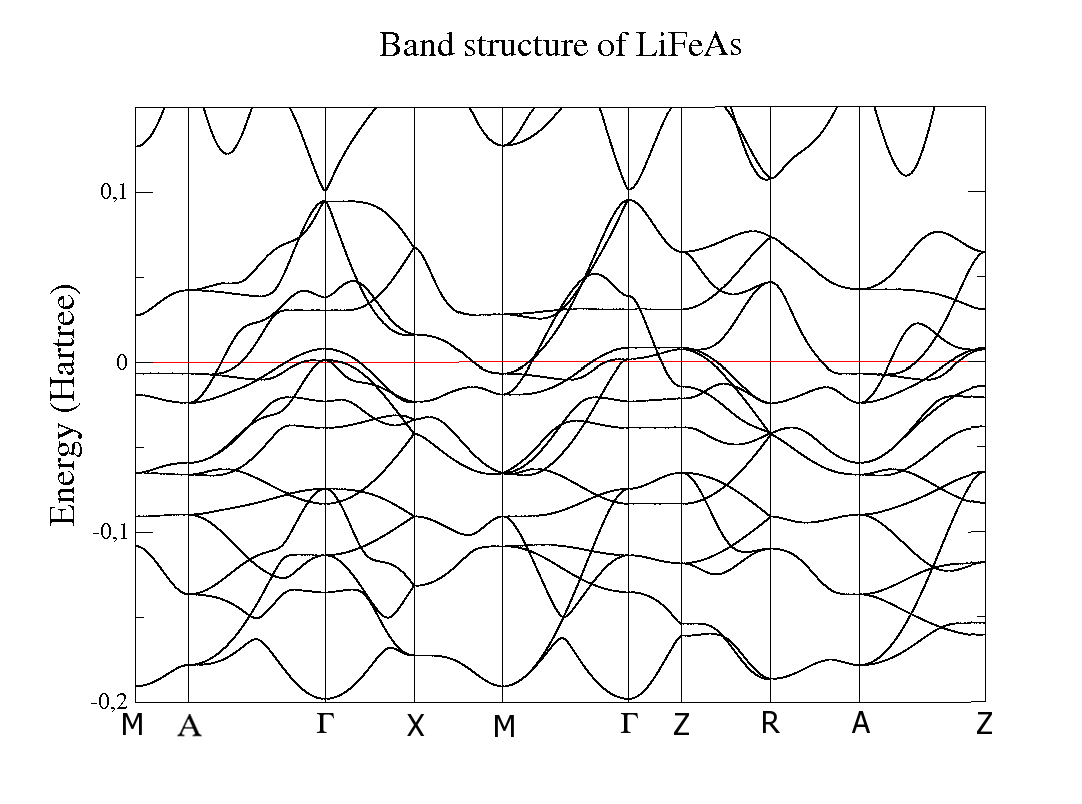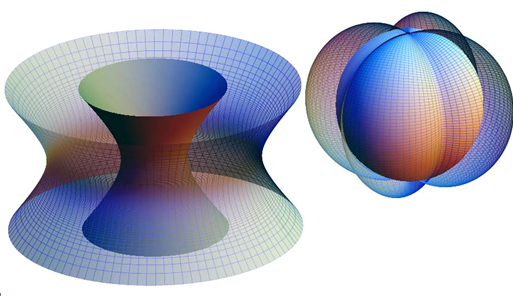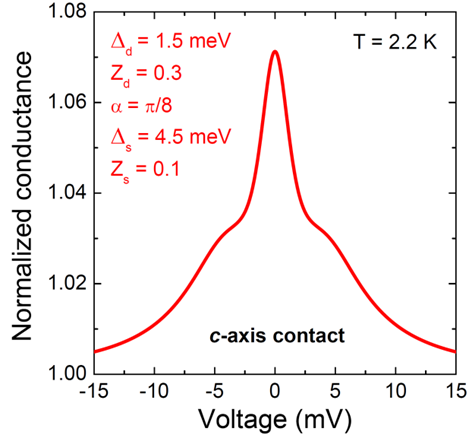 | Laboratory of Theoretical and Experimental Superconductive Tunnelling |
| Home | Publications | Equipments | Projects | People | Join us | Links |
Fundamental study of unconventional superconductors | Density Functional Theory calculations DFT is a ground-state theory, which describes a many-body
interacting system through a single variable, i.e. the particle density, instead of
the usual many-body wavefunction. In Kohn-Sham DFT, that is the most widely
used, the original many-body problem is replaced by an auxiliary
independent-particle system, introducing a fictitious and effective Kohn-Sham
single-particle potential. The many-body effects are approximated by a
so-called exchange-correlation functional. An ab-initio approach allows the study of the electronic properties of the material, including the density of states, of the phonon spectrum and of the Eliashberg spectral function. Within our research the bandstructure, the density of states at the Fermi level and the Eliashberg spectral function serve as inputs for calculations within the Eliashberg theory of superconductivity. The shape of the Fermi surface is used within the calculations of the point-contact Andreev-reflection spectra using the 3D BTK model. |  Electronic band structure of LiFeAs calculated by using the ELK all-electron DFT code Maximum symmetry cuts of the Brillouin zone of LiFeAs along which the band structure above has been reported |
| Models for Andreev reflection The first model for Andreev reflection at the N/S interface was developed by Blonder, Tinkham and Klawijk (BTK) in 1982. It was written for the case of isotropic (s-wave) single-gap superconductors with a spherical or nearly spherical Fermi surface, and it was 1D. A generalization was later proposed by Y. Tanaka and S. Kashiwaya to account for in-plane anisotropy of the order parameters (like the d-wave one typical of cuprates), but still in the case of spherical or cylindrical Fermi surfaces. Since the discovery of superconductivity in MgB2 it became clear that in multiband superconductors with complex Fermi surfaces the relative weight of each band in the Andreev reflection spectra depends on the direction of current injection. This is mainly a consequence of the shape of the Fermi surface. Therefore, unconventional superconductors with multiple Fermi surface sheets and multiple gaps cannot be properly described by a BTK model with the approximation of spherical (concentrical) Fermi surfaces and a generalization of the standard model for Andreev reflection is required. We thus developed and used a 3D BTK model in which the real shape of the Fermi surface (as calculated from DFT) is taken into account (though in a simplified way) to calculate the Andreev spectra. This gives point-contact Andreev-reflection spectroscopy unprecedented predictive power and modelling accuracy: indeed, it becomes possible to account for any shape of the Fermi surface and any structure of the gap, such as those predicted for iron-based superconductors (with three-dimensional lines of nodes). | Point-contact spectrum measured at 1.8 K in PuCoGa5 with the relevant fit (line) obtained with the 2D BTK model using a d-wave order parameter (inset). | |
The Fermi surface of MgB2 caculated by DFT and the simplified version used in the 3D BTK model | ||
  Calculated point-contact spectrum for c-axis injection in a superconductor featuring a 2D FS with isotropic gap and a 3D FS with nodal gap (top). | ||
| LaTEST - Department of Applied Science and Technology, Politecnico di Torino corso Duca degli Abruzzi 24, 10129 Torino (TO) - Italy  |